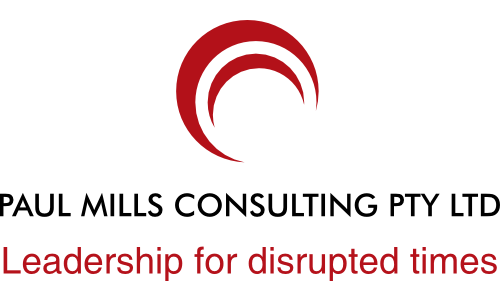What we still get wrong when trying to engage our people
Have you ever spent time in a team or organisation where people say they love change, but their actions and responses to emerging issues seem otherwise? Perhaps in 2025, it is career suicide to not be seen to embrace change, especially in an environment of constant restructures and evolving technologies, but it remains true that all humans take some time to adjust to a new situation. All of us have a lens on change that influences how we may react, talk and behave when something new lands. The nature of unconscious bias also means that people are judging that reaction, and those perceptions can influence decisions like appointment to projects, opportunities for promotion and the like. When we know the utility and impact of our preferences, we can in turn influence how the world sees us, especially around our value in a changing situation.
Most would agree that the ‘change dance’ is accelerating. Emerging technologies have the potential to radically reshape our world, with an emphasis on responding quickly to opportunities and threats. But what if that rapid response results in more risk than opportunity? Where are the mediating forces that can temper that action with careful consideration? In our experience, some organisations have adopted a ‘musical chairs’ approach to the change dance, taking the chairs away for those who seem change-resistant or who may be asking questions that seemingly slow down the process. What if those dissenting voices are just as important, if not more so, than those who love large scale change and want it to happen quickly?
Thankfully, we have a constructive tool that looks at how people respond to change, both at work and in their personal lives, that allows us to better connect with diversity of thought. I have been working with the Change Style Indicator since the late 1990s and have seen its impact over the years as a simple but powerful tool for both leaders and individual contributors. Some context on what this feedback tool involves.
The Change Style Indicator is a self-assessment tool designed to measure an individual’s preferred style in approaching and addressing change. It provides individuals of all levels with insights into personal preferences for managing through change and provides context for how those around them might perceive and respond to their preferred style. Once participants complete the online questionnaire, they are placed on a continuum between Conserver, Pragmatist and Originator. In essence, Conservers prefer the known to the unknown; Pragmatists prefer to explore the current situation in an objective manner; and Originators prefer a faster and more radical approach to change.
What makes this tool and approach so powerful is that it is non-judgmental – all types meaningfully contribute to change if they are appropriately engaged. In absence of this model, people can tend to judge Conservers as change resistant, largely because they like to navigate change by looking to the past and taking careful, low risk steps towards an outcome. Indeed, all three change handling styles can be viewed both positively and negatively, so it is important particularly for leaders to understand how to leverage the value of each preference and to communicate differently based on the different needs each lens on change has.
The Change Style Indicator 2 tool launched in February 2025, building on the same continuum and preferences, but reflecting more modern language and an updated set of norm data through to 2023. This new norm data is powerful, as it includes the period of the COVID-19 pandemic and allows us to test an important hypothesis around generation z in terms of their preferences compared to earlier generations in the workforce.
A key trend over the period that the Change Style Indicator model has existed is a gradual trend on the continuum towards Conserver. This is reflected in the chart below:
When we look at the breakdown of the latest norm group data (N = 96,427) in terms of age, there is a fascinating pattern which reflects a strong Conserver preference amongst 18 – 29-year-olds, approximating the sample for Baby Boomers 60+.
Having grown up in a world of technology, disruption and accelerating change, the assumption may be amongst some that Generation Zs are comfortable with radical change and lead them accordingly. The data seems to dispute that view.
The gender information is also interesting, with more women than men trending towards the Conserver end of the continuum as reflected below:
Finally, the country breakdown reveals what has been a consistent trend for some time. Generally, more didactic cultures trend towards Conserver as a cultural influence. There are some outliers when it comes to a more pronounced Originator preference, being northern Europe (Denmark in particular), the hypothesis being the role the school system plays in developing future thinking, particularly in secondary education.
Whilst the sample size is very small, it will be interesting to watch as more New Zealanders take the Change Style Indicator/CSI 2 profile to see if that larger share of Originators compared to Australia holds true.
The change dance is accelerating. We are likely to see innovation driven by AI and other technologies occurring at rapid pace over coming years, an environment where Originators typically feel comfortable. To balance that, risk assessment and pragmatic implementation will be critical, drawing the preferences of Conserver and Pragmatist. To engage the whole audience, we need to find ways to communicate, collaborate and problem- solve in a way that embraces all lenses.
Successful change programs require considered communication approaches. Remember that in any workshop or Town Hall, all three types will be present but will resonate with different messages. Storytelling is a powerful mechanism for change, but those stories need to connect differently to different people. The starting point is not to let your preference inform how you communicate change with others. Picture the Originator who gets excited about radical change and connects easily with those who share that lens, but not as much the Conservers who may prefer to go slower and who more naturally look to the past.
Next, a balance of change handling orientations within a team fosters a more inclusive environment where everyone can contribute to change and innovation. Given the growing trend towards the Conserver end of the continuum, having a disruptor within the team is also important in getting people to ‘lift their heads above the dashboard’.
If you believe that diversity of thought has never been more important, being an inclusive leader means committing to the discipline of running processes and programs that allow dissenting voices and diverse thought to naturally emerge. The starting point for this, we suggest, is to profile your team via the Change Style Indicator 2, allowing them the benefit to understand their change handling preferences and maximise their contribution during change.
The Change Style Indicator 2 tool now features in the Paul Mills Consulting – Leading Change and Thriving Through Change programs. We can also facilitate the tool and produce group data for development workshops, offsites and the like, providing enhanced self-awareness and an ability to lead teams effectively through disruptive or transformative change. Reach us for more information – programs@paulmills.com.au
Paul Mills is Director of Paul Mills Consulting and consults globally to leading Business Schools. He has presented in leadership, change and strategy on four continents and has been in practice for close to 30 years.





